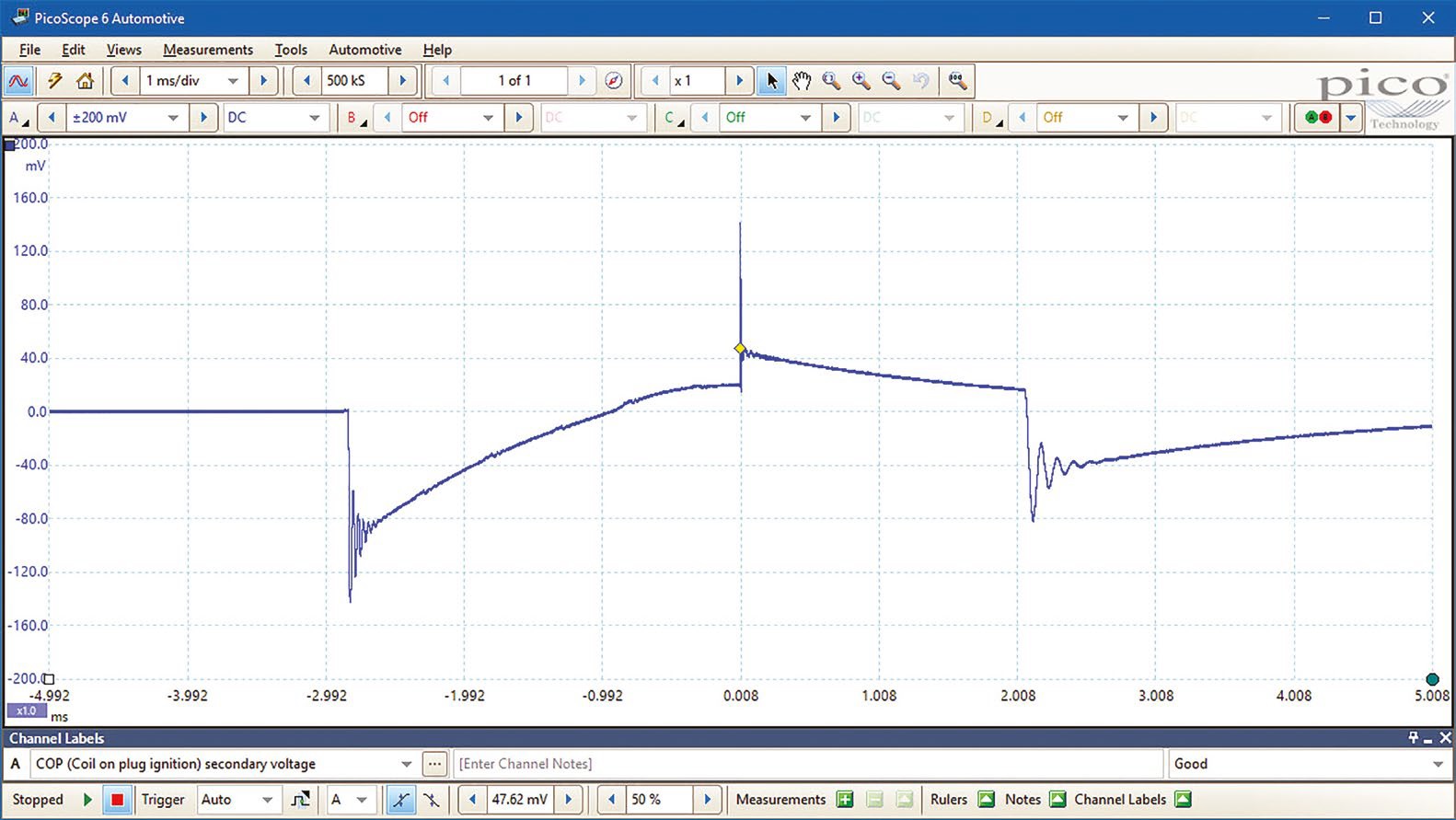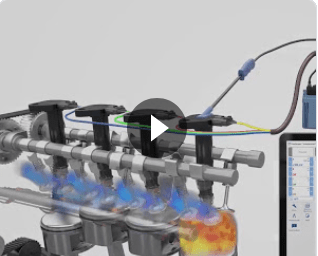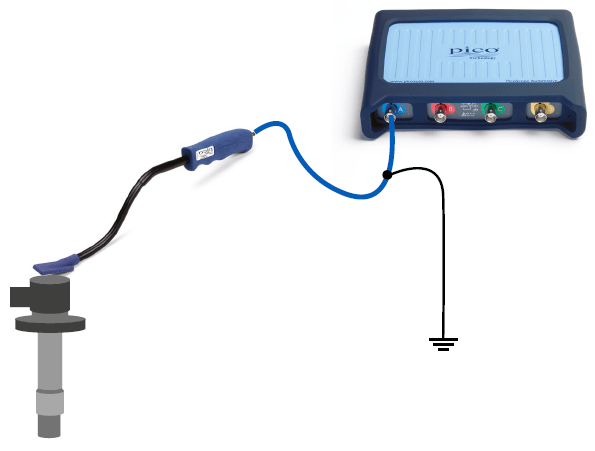Test 2 - Ignition Coil on Plug (COP)
- Software: PicoScope 6 - Guided Test AT077
- Purpose of Test - Suspected Vehicle Single Coil Pack Issues
- Skill Level Required - Very Easy
Connect: Locate the top of your coil on plug (COP) packs. Connect the Coil-On-Plug and Signal Probe to the PicoScope and always earth it to the vehicle.
Run: The engine must be idling for this test. Start PicoScope and place the end of the Coil on Plug (COP) probe on the top of the coil pack to capture the signal. You should see a clear signal.
Read: The waveform will look something like the example below. Now you can see every detail. In our example, you can clearly see the ‘burn time’ from the spark plug. It also shows the coil oscillation period.
Remember how easy it is to use rulers to measure the different parts of the waveform, and our reference waveforms, to compare with different coil packs.

COP Waveform Analysis
The Coil on Plug (COP) Probe couples to the magnetic field in the coil and reveals the secondary (spark-plug) voltage waveform. The waveform above is good. From left to right:
- The driver switches on and current starts to flow in the primary.
- The secondary reacts by also going low. The oscillations are normal and actually show good inductance. If they are absent, the coil may be faulty or marginal.
- The current builds up in the coil during the dwell time and when the plug is ready to fire, the driver switches off and a large back EMF spike results (about 400V in the primary).
- The transformer action of the secondary increases the spike to about 10kV causing the air (mixed with fuel vapour) between the plug electrodes to ionise.
- When ionisation takes place, the resistance drops abruptly ending the spike.
- Current starts to flow, dissipating power in the ionised air, heating it to produce the white-hot spark.
- The spark continues for the burn time and when the energy stored in the inductance (magnetic field) of the coil is depleated, the air de-ionises and becomes high resistance again and current stop flowing.
- The abrupt cessation of current causes ringing oscillations. Again, these are normal and should be present.
COP Test Animation
The animation below shows how to use your Coil on Plug COP probe to find a faulty coil pack quickly.
Video Commentary
A suspected COP fault after a misfire was reported by the customer. The extremely high voltages in an ignition coil can cause the internal insulation to break down. This can reduce spark intensity or extinguish the spark completely.
The video shows how the insulation has broken down and the the high tension secondary voltage is finding an alternative path (leaking) within the coil.
Connect: Connect the Coil-On-Plug and Signal Probe to the PicoScope and always earth it to the vehicle.
Run: Start the engine which should be idling for this test. Start PicoScope and place the end of the Coil on Plug (COP) probe on the top of the coil pack to capture the signal. Move it around to obtain the best, clear signal. Test each of the coil packs sequentially.
Read: Examine the waveform, look for the initial and final oscillations, a good dwell time, ionising spike and burn time.
When you find a good waveform, set it as a reference so that you can compare it to the other units.
Comparison of the reference and cylinder 1 waveform shows that the dwell time is missing and as there is no ionising spike, no spark or burn time occurred. Obviously there is a problem with this unit.
After replacement of the coil pack, the test was repeated confirming the fix with a good waveform on the new coil.
Please click Next for the third test - Intermittant Connections, Wiring Loom, Wiggle Test.


